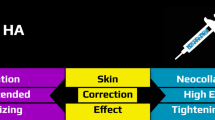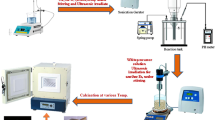Abstract
Treatment of dental, craniofacial and orthopedic defects with bone graft substitutes has shown promising result achieving almost complete bone regeneration depending on product resorption similar to human bone’s physicochemical and crystallographic characteristics. Among these, non-ceramic and ceramic hydroxyapatite being the main inorganic salt of bone is the most studied calcium phosphate material in clinical practices ever since 1970s and non-ceramic since 1985. Its “chemical similarity” with the mineralized phase of biologic bone makes it unique. Hydroxyapatite as an excellent carrier of osteoinductive growth factors and osteogenic cell populations is also useful as drug delivery vehicle regardless of its density. Porous ceramic and non-ceramic hydroxyapatite is osteoconductive, biocompatible and very inert. The need for bone graft material keeps on increasing with increased age of the population and the increased conditions of trauma. Recent advances in genetic engineering and doping techniques have made it possible to use non-ceramic hydroxyapatite in larger non-ceramic crystals and cluster forms as a successful bone graft substitute to treat various types of bone defects. In this paper we have mentioned some recently studied properties of hydroxyapatite and its various uses through a brief review of the literatures available to date.





Similar content being viewed by others
References
Beaman FD, Bancroft LW, Peterson JJ et al (2006) Bone graft materials and synthetic substitutes. Radiol Clin North Am 44:451–461. doi:10.1016/j.rcl.2006.01.001
Hegde C, Shetty V, Wasnik S et al (2013) Use of bone graft substitute in the treatment for distal radius fractures in elderly. Eur J Orthop Surg Traumatol 23:651–656. doi:10.1007/s00590-012-1057-1
Jakubietz MG, Gruenert JG, Jakubietz RG (2011) The use of beta-tricalcium phosphate bone graft substitute in dorsally plated, comminuted distal radius fractures. J Orthop Surg Res 6:24. doi:10.1186/1749-799X-6-24
Goto A, Murase T, Oka K et al (2011) Use of the volar fixed angle plate for comminuted distal radius fractures and augmentation with a hydroxyapatite bone graft substitute. Hand Surg 16:29–37. doi:10.1142/S0218810411005023
Rajan GP, Fornaro J, Trentz O et al (2006) Cancellous allograft versus autologous bone grafting for repair of comminuted distal radius fractures: a prospective, randomized trial. J Trauma 60:1322–1329. doi:10.1097/01.ta.0000195977.18035.40
Luchetti R (2004) Corrective osteotomy of malunited distal radius fractures using carbonated hydroxyapatite as an alternative to autogenous bone grafting. J Hand Surg Am 29:825–834. doi:10.1016/j.jhsa.2004.06.004
Aghazadeh A, Rutger Persson G, Renvert S (2012) A single-centre randomized controlled clinical trial on the adjunct treatment of intra-bony defects with autogenous bone or a xenograft: results after 12 months. J Clin Periodontol 39:666–673. doi:10.1111/j.1600-051X.2012.01880.x
Meyle J, Hoffmann T, Topoll H et al (2011) A multi-centre randomized controlled clinical trial on the treatment of intra-bony defects with enamel matrix derivatives/synthetic bone graft or enamel matrix derivatives alone: results after 12 months. J Clin Periodontol 38:652–660. doi:10.1111/j.1600-051X.2011.01726.x
Misch CM (2010) Autogenous bone: is it still the gold standard? Implant Dent 19:361. doi:10.1097/ID.0b013e3181f8115b
Tovar N, Jimbo R, Gangolli R, Perez L et al (2014) Evaluation of bone response to various anorganic bovine bone xenografts: an experimental calvaria defect study. Int J Oral Maxillofac Surg 43:251–260. doi:10.1016/j.ijom.2013.07.005
Zafiropoulos GG, Hoffmann O, Kasaj A et al (2007) Treatment of intrabony defects using guided tissue regeneration and autogenous spongiosa alone or combined with hydroxyapatite/beta-tricalcium phosphate bone substitute or bovine-derived xenograft. J Periodontol 78:2216–2225. doi:10.1902/jop.2007.070146
Belli E, Longo B, Balestra FM (2005) Autogenous platelet-rich plasma in combination with bovine-derived hydroxyapatite xenograft for treatment of a cystic lesion of the jaw. J Craniofac Surg 16:978–980. doi:10.1097/01.scs.0000183469.93084.f3
Hanna R, Trejo PM, Weltman RL (2004) Treatment of intrabony defects with bovine-derived Xenograft alone and in combination with platelet-rich plasma: a randomized clinical trial. J Periodontol 75:1668–1677. doi:10.1902/jop.2004.75.12.1668
Baldini M, DeSanctis M, Ferrari M (2011) Deproteinized bovine bone in periodontal and implant surgery. Dent Mater 27:61–70. doi:10.1016/j.dental.2010.10.017
Cornell CN, Lane JM (1992) Newest factors in fracture healing. Clin Orthop 277:297–311
Guda T, Walker JA, Singleton B et al (2014) Hydroxyapatite scaffold pore architecture effects in large bone defects in vivo. J Biomater Appl 28:1016–1027. doi:10.1177/0885328213491790
Ong JC, Kennedy MT, Mitra A et al (2012) Fixation of tibial plateau fractures with synthetic bone graft versus natural bone graft: a comparison study. Ir J Med Sci 181:247–252. doi:10.1007/s11845-011-0797-y
Antonakos A, Liarokapis E, Leventouri T (2007) Micro-Raman and FTIR studies of synthetic and natural apatites. Biomaterials 28:3043–3054. doi:10.1016/j.biomaterials.2007.02.028
LeGeros RZ, Parsons JR, Daculsi G et al (1988) Significance of the porosity and physical chemistry of calcium phosphate ceramics. Biodegradation–bioresorption. Ann N Y Acad Sci 523:268–271. doi:10.1111/j.1749-6632.1988.tb38519.x
Hulbert SF, Young FA, Mathews RS et al (1970) Potential of ceramic materials as permanently implantable skeletal prostheses. J Biomed Mater Res 4:433–456. doi:10.1002/jbm.820040309
Spivak JM, Ricci JL, Blumenthal NC et al (1990) A new canine model to evaluate the biological response of intramedullary bone to implant materials and surfaces. J Biomed Mater Res 24:1121–1149. doi:10.1002/jbm.820240902
Roy DM, Linnehan SK (1974) Hydroxyapatite formed from coral skeletal carbonate by hydrothermal exchange. Nature 247:220–222. doi:10.1038/247220a0
Nandi SK, Kundu B, Ghosh SK et al (2008) Efficacy of nano hydroxyapatite prepared by an aqueous solution combustion technique in healing bone defects of goat. J Vet Sci 9:183–191. doi:10.4142/jvs.2008.9.2.183
Ghosh SK, Nandi SK, Kundu B et al (2008) Invivo response of porous hydroxyapatite and beta-tricalcium phosphate prepared by aqueous solution combustion method and comparison with bioglass scaffolds. J Biomed Mater Res B Appl Biomater 86:217–227. doi:10.1002/jbm.b.31009
Erbe EM, Marx JG, Clineff TD et al (2001) Potential of an ultra porous beta- tricalcium phosphate synthetic cancellous bone void filler and bone marrow aspirate composite graft. Eur Spine J 10:S141–S146. doi:10.1007/s005860100287
Minami M, Takechi M, Ohta K et al (2013) Bone formation and osseointegration with titanium implant using granular-and block-type porous hydroxyapatite ceramics (IP-CHA). Dent Mater J 32:753–760. doi:10.4012/dmj.201-169
Yamamiya K, Okuda K, Kawase T et al (2008) Tissue-engineered cultured periosteum used with platelet-rich plasma and hydroxyapatite in treating human osseous defects. J Periodontol 79:811–888. doi:10.1902/jop.2008.070518
den Boer FC, Wippermann BW, Blokhuis TJ et al (2003) Healing of segmental bone defects with granular porous hydroxyapatite augmented with recombinant human osteogenic protein1 or autologous bone marrow. J Orthop Res 21:521–528. doi:10.1016/S0736-0266(02)00205-X
Moreira-Gonzalez A, Jackson IT, Miyawaki T et al (2003) Augmentation of the craniomaxillofacial region using porous hydroxyapatite granules. Plast Reconstr Surg 111:1808–1817. doi:10.1097/01.PRS.0000055432.20074.93
Itokazu M, Matsunaga T, Ishii M et al (1996) Use of arthroscopy and interporous hydroxyapatite as a bone graft substitute in tibial plateau fractures. Arch Orthop Trauma Surg 115:45–48. doi:10.1007/BF00453217
Jarcho M (1986) Biomaterials aspects of calcium phosphates: properties and application. Dent Clin North Am 30:25–67
Balcik C, Tokdemir T, Senköylü A et al (2007) Early weight bearing of porous HA/TCP (60/40) ceramics invivo: a longitudinal study in a segmental bone defect model of rabbit. Acta Biomater 3:985–996. doi:10.1016/j.actbio.2007.04.004
Finkemeier CG (2002) Bone-grafting and bone-graft substitutes. J Bone Joint Surg Am 84:454–464
Saikia KC, Bhattacharya TD, Bhuyan SK et al (2008) Calcium phosphate ceramics as bone graft substitutes in filling bone tumor defects. Indian J Orthop 42:169–172. doi:10.4103/0019-5413.39588
Valen M, Ganz SD (2002) Part I—a synthetic bioactive resorbable graft (SBRG) for predictable implant reconstruction. J Oral Implantol 28(4):167–177
Ricci JL, Blumenthal NC, Spivak JM, Alexander H (1992) Evaluation of a low-temperature calcium phosphate particulate implant material: physical–chemical properties and in vivo bone response. J Oral Maxillofac Surg 50:969–978
Valen M (2013) Letter to Editor. JOI 39(2):234–235 (Re: Fluoride-treated bioresorbable synthetic hydroxylapatite promotes proliferation and differentiation of human osteoblastic MG-63 cells)
Kimoto K, Okudera T, Okudera H, Nordquist W, Krutchkoff D (2011) Part I: crystalline fluorapatite-coated hydroxylapatite; physical properties. JOI 37(1):27–33
Nordquist WD, Okudera H, Kitamura Y, Kimoto K, Okudera T, Krutchoff D (2011) Part II crystalline fluorapatite-coated hydroxylapatite implant material: a dog study with histologic comparison of osteogenesis seen with FA-coated HA grafting material versus HA controls: potential bacteriostatic effect of fluoridated HA. JOI 37(1)
Nordquist WD, Krutchoff D (2011) Part III: crystalline fluorapatite-coated hydroxylapatite; potential use as a bacteriostatic agent for both pre-implant cases and retreatment of infected implant sites. A report of 4 cases. JOI 37(1)
Ohno M, Kimoto K et al (2013) Fluoride-treated bio-resorbable synthetic hydroxyapatite promotes proliferation and differentiation of human osteoblastic MG-63 cells. JOI 39(2):154–160
Lalidou F, Kolios G, Drosos GI (2014) Bone infections and bone graft substitutes for local antibiotic therapy. Surg Technol Int 24:353–362
Jones NF, Brown EE, Mostofi A et al (2005) Healing of a scaphoid nonunion using human bone morphogenetic protein. J Hand Surg Am 30:528–533. doi:10.1016/j.jhsa.2004.12.005
Santos MH, Valerio P, Goes AM et al (2007) Biocompatibility evaluation of hydroxyapatite/collagen nanocomposites doped with Zn2+. Biomed Mater 2:135–141. doi:10.1088/1748-6041/2/2/012
Webster TJ, Massa-Schlueter EA, Smith JL et al (2004) Osteoblast response to hydroxyapatite doped with divalent and trivalent cations. Biomaterials 25:2111–2121. doi:10.1016/j.biomaterials.2003.09.001
Irigaray JL, Oudadesse H, Jallot E et al (1999) Kinetics resorption after implantation of some hydroxyapatite compounds used as biomaterials. Adv Sci Technol 28:399–403
Moroni A, Pegreffi F, Cadossi M et al (2005) Hydroxyapatite-coated external fixation pins. Expert Rev Med Devices 2:465–471. doi:10.1586/17434440.2.4.465
Nguyen HQ, Deporter DA, Pilliar RM et al (2004) The effect of sol-gel-formed calcium phosphate coatings on bone ingrowth and osteoconductivity of porous-surfaced Ti-alloy implants. Biomaterials 25:865–876. doi:10.1016/S0142-9612(03)00607-0
Pommer A, Muhr G, David A (2002) Hydroxyapatite-coated Schanz pins in external fixators used for distraction osteogenesis: a randomized, controlled trial. J Bone Joint Surg Am 84:1162–1166
Jang DW, Franco RA, Sarkar SK et al (2014) Fabrication of porous hydroxyapatite scaffolds as artificial bone perform and its biocompatibility evaluation. ASAIO J 60:216–223. doi:10.1097/MAT.0000000000000032
Kwon BJ, Kim J, Kim YH et al (2013) Biological advantages of porous hydroxyapatite scaffold made by solid freeform fabrication for bone tissue regeneration. Artif Organs 37:663–670. doi:10.1111/aor.12047
Kenny EB, Lekovic V, Han T et al (1985) The use of a porous hydroxylapatite implant in periodontal defects. I. Clinical results after six months. J Periodontol 56:82–88. doi:10.1902/jop.1985.56.2.82
Martin RB, Chapman MW, Sharkey NA et al (1993) Bone ingrowth and mechanical properties of coralline hydroxyapatite 1 yr after implantation. Biomaterials 14:341–348. doi:10.1016/0142-9612(93)90052-4
Holmes RE, Wardrop RW, Wolford LM (1988) Hydroxylapatite as a bone graft substitute in orthognathic surgery: histologic and histometric findings. J Oral Maxillofac Surg 46:661–671. doi:10.1016/0278-2391(88)90109-7
Rosen HM, McFarland MM (1990) The biologic behavior of hydroxyapatite implanted into the maxillofacial skeleton. Plast Reconstr Surg 85:718–723
Motomiya M, Ito M, Takahata M et al (2007) Effect of hydroxyapatite porous characteristics on healing outcomes in rabbit posterolateral spinal fusion model. Eur Spine J 16:2215–2224. doi:10.1007/s00586-007-0501-0
Kaito T, Mukai Y, Nishikawa M et al (2006) Dual hydroxyapatite composite with porous and solid parts: experimental study using canine lumbar interbody fusion model. J Biomed Mater Res B Appl Biomater 78:378–384. doi:10.1002/jbm.b.30498
Norman ME, Elgendy HM, Shors EC et al (1994) An in vitro evaluation of coralline porous hydroxyapatite as a scaffold for osteoblast growth. Clin Mater 17:85–91
Jarcho M (1981) Calcium phosphate ceramics as hard tissue prosthetics. Clin Orthop Relat Res 157:259–278
Wolfe SW, Pike L, Slade JF 3rd et al (1999) Augmentation of distal radius fracture fixation with coralline hydroxyapatite bone graft substitute. J Hand Surg Am 24:816–827
Bucholz RW, Carlton A, Holmes RE (1987) Hydroxyapatite and tricalcium phosphate bone graft substitutes. Orthop Clin North Am 18:323–334
Holmes RE (1979) Bone regeneration within a coralline hydroxyapatite implant. Plast Reconstr Surg 63:626–633
Bucholz RW, Carlton A, Holmes R (1989) Interporous hydroxyapatite as a bone graft substitute in tibial plateau fractures. Clin Orthop Relat Res 240:53–62
Boden SD, Martin GJ Jr, Morone M et al (1999) The use of coralline hydroxyapatite with bone marrow, autogenous bone graft, or osteoinductive bone protein extract for posterolateral lumbar spine fusion. Spine (Phila Pa 1976) 24:320–327
Zdeblick TA, Cooke ME, Kunz DN et al (1994) Anterior cervical discectomy and fusion using a porous hydroxyapatite bone graft substitute. Spine (Phila Pa 1976) 19:2348–2357
Georgiadis NS, Terzidou CD, Dimitriadis AS (1999) Coralline hydroxyapatite sphere in orbit restoration. Eur J Ophthalmol 9:302–308
Conflict of interest
None.
Author information
Authors and Affiliations
Corresponding author
Rights and permissions
About this article
Cite this article
Dutta, S.R., Passi, D., Singh, P. et al. Ceramic and non-ceramic hydroxyapatite as a bone graft material: a brief review. Ir J Med Sci 184, 101–106 (2015). https://doi.org/10.1007/s11845-014-1199-8
Received:
Accepted:
Published:
Issue Date:
DOI: https://doi.org/10.1007/s11845-014-1199-8




